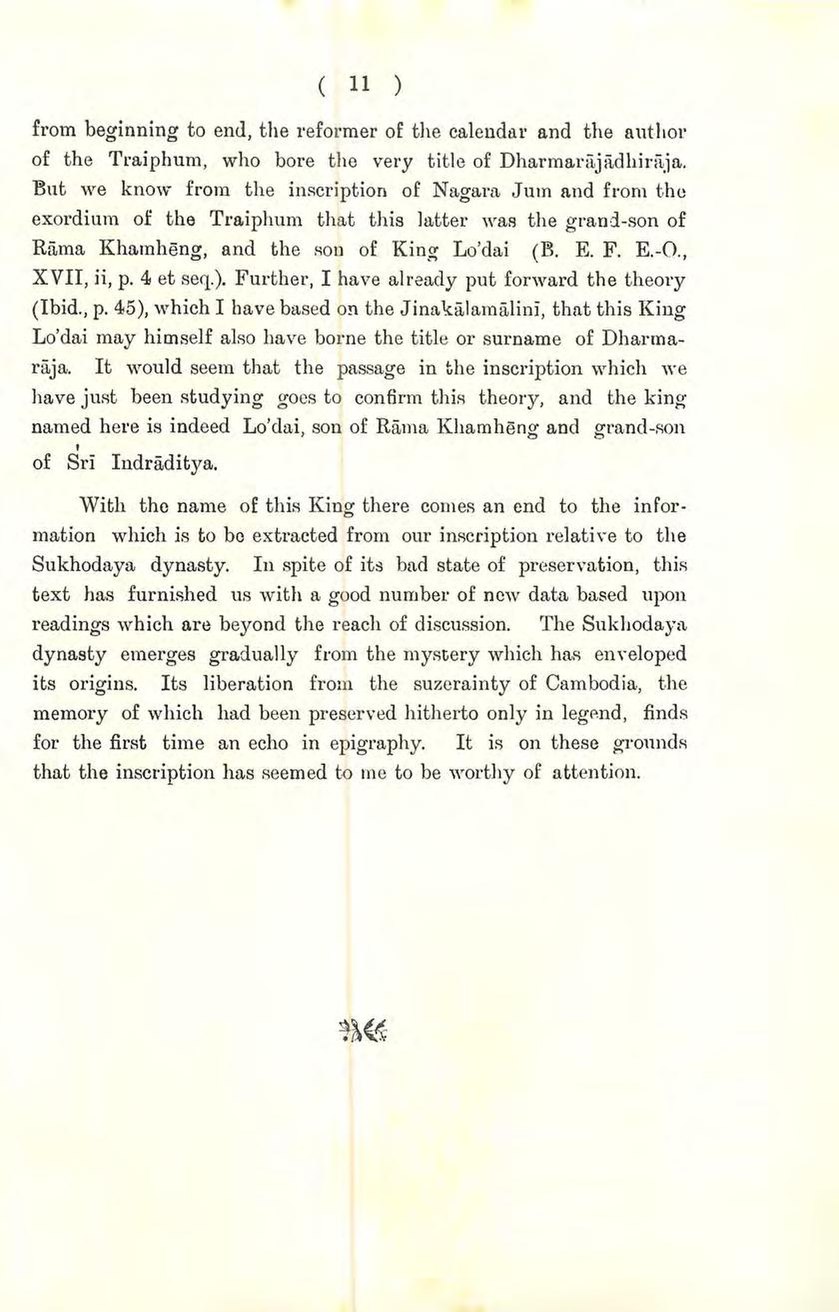( 11 )
from beginning to end, the reformer of the calendar and the author of the Traiphum, who bore the very title of Dharmarājādhirāja. But we know from the inscription of Nagara Jum and from the exordium of the Traiphum that this latter was the grand-son of Rāma Khamhēng, and the son of King Lo'dai (B. E. F. E.-0., XVII, ii, p. 4 et seq.). Further, I have already put forward the theory (Ibid., p. 45), ·which I have based on the Jinakālamālinī, that this King Lo'dai may himself also have borne the title or surname of Dharmarāja. It would seem that the passage in the inscription which we have just been studying goes to confirm this theory, and the king named here is indeed Lo'dai, son of Rāmna Khamhēng and grand-son of Śrī Indrāditya.
With the name of this King there comes an end to the information which is to be extracted from our inscription relative to the Sukhodaya dynasty. In spite of its bad state of preservation, this text has furnished us with a good number of new data based upon readings which are beyond the reach of discussion. The Sukhodaya dynasty emerges gradually from the mystery which has enveloped its origins. Its liberation from the suzerainty of Cambodia, the memory of which had been preserved hitherto only in legend, finds for the first time an echo in epigraphy. It is on these grounds that the inscription has seemed to me to be worthy of attention.
